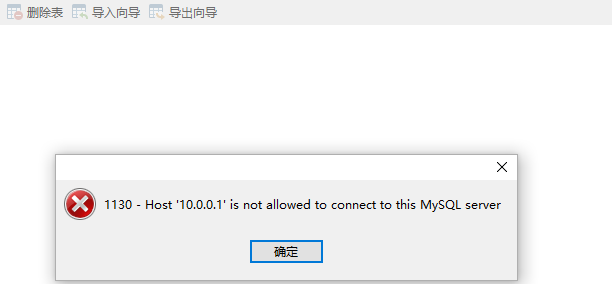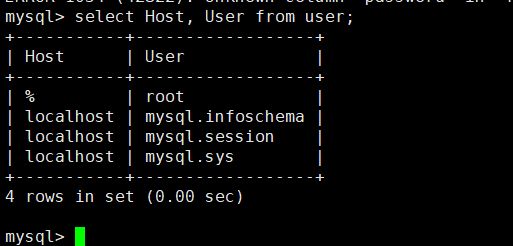Solution: do not open it after installation. First click Navicat keyword to patch, and then open the software for activation!
For details, please refer to: https://blog.csdn.net/wasd_ 123wf/article/details/121247228
Solution: do not open it after installation. First click Navicat keyword to patch, and then open the software for activation!
For details, please refer to: https://blog.csdn.net/wasd_ 123wf/article/details/121247228
An error is reported when using Navicat to connect to a database, as shown in the figure:

Reason: the user in the MySQL database in the database server does not have permission in the table (it can also be said that there is no user)
Solution: enter the database of the server first, MySQL – U root – P
Look at all the current databases, show databases;
Enter the MySQL database and use MySQL;
View all tables in MySQL database show tables;
Modify the host in the user table: update user set host = ‘%’ where user =’root ‘;
Refresh permissions: flush privileges;


Reconnection will succeed

I use this scheme. The personal test is effective. In addition, there are other methods
For example, any remote host can access the database and enter the database operation
GRANT ALL PRIVILEGES ON *.* TO ‘ root’@’%’WITH GRANT OPTION;
FLUSH PRIVILEGES;
Also, look at the firewall, because the firewall is closed. Let the firewall open port 3306: iptables – I input – P TCP – s 0.0.0.0/0 — dport 3306 – j ACCEPT This approach is actually useless.

Developing an application system to connect to the MySQL database of the company’s test server is very slow, but connecting to the local MySQL database is very fast. At first, it was thought that it may be caused by network connection problems. After Ping and routing, it was found that the network communication is normal, and the local connection on the MySQL machine is very fast, Therefore, the network problem has been basically eliminated, so I want to see if it is a MySQL configuration problem. After querying MySQL related documents and network search, it seems that a configuration can solve such a problem, that is, add the following configuration parameters to the MySQL configuration file:
[mysqld]
skip-name-resolve
Under Linux, the configuration file is/etc/my.cnf. Under windows, the configuration file is my.ini file under MySQL installation directory. Note that the configuration is added under [mysqld]. After changing the configuration and saving it, restart MySQL and conduct remote connection test. Everything is restored as before.
Problems arise
The local system version is MacOS Big Sur 11.1, and the Navicat version is 15.0.22
when we create a new connection or edit an old connection, check Save password , and click Save to pop up:
Failed to save password
Error code: -34018
Although it does not affect this login, you will need to re-enter your password the next time you log in.
Cause of the problem
Recently, two PJ versions are not perfect.
After reading many blogs, one blogger plagiarized the other and wrote the following command to solve the problem:
cd /Library/Keychains
sudo rm -r *
But this is not only unsuccessful, but also causes the key chain of MAC cache to be lost, making icloud login invalid and device association broken.
Problem solving
Practice success: you can first put the 15.0.20 version back to cover the current version 15.0.22 , after saving the password under the old version , if there is a need to use the new version , then use the new version to cover it.